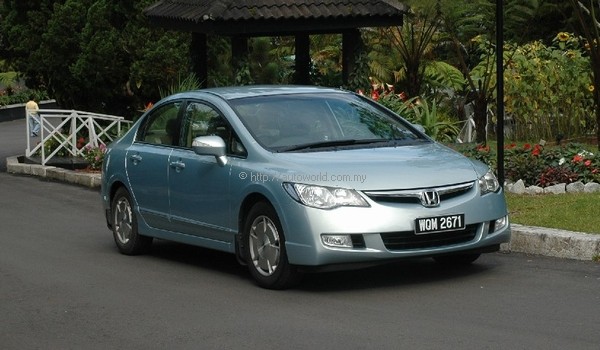Sensible Driving & Saving Fuel
On the day that the price of 97 RON petrol went up to RM2.70 a litre and Diesel to RM2.581 a litre, I was driving back from the East Coast, and noted something very interesting. Being a victim of the increase myself, I was traveling a whole lot slower and being very gentle on the throttle, but during the entire 400 kilometre journey, not including the city traffic when I got back into town, of course, not more than five vehicles overtook me. This means that generally, people know that gentle driving saves fuel, and at least for a while, until people recover from the initial shock, most of us will be pussy-footing around to squeeze the most out of every litre of fuel we buy.
Yes, driving gently, avoiding hard acceleration, and keeping speeds down do result in improvements in fuel consumption, but we must remember not to put to compromise, our safety, the safety of the people in our cars, and the safety of the people around us. Whilst everybody else is talking about how to drive efficiently, let us look a little deeper on how to drive efficiently, yet at the same time, to do it safely and sensibly.
There may be times when you have to accelerate hard to get out of trouble. For example, if you are overtaking on a trunk road, (non-highway, without dividers in the middle, and two-way traffic), every second that you spend on the opposite lane is what is considered your TED (Time Exposed to Danger). Therefore the less time you spend in TED, the better for you. There is no point trying to save fuel if you aren’t going to be around to enjoy your savings, right?
In addition, to a lesser extent, be mindful also that there are others on the road besides yourself when you are overtaking on the highways. Try not to hog the fast lane too much. You can accelerate less briskly, but putting smooth and gradual pressure on the gas pedal will give a good combination of reasonable consumption plus give you the added impetus to your car to overtake smoothly; and remember to get back into the left lane as soon as it is safe to do so. Generally, it is perfectly all right to be gentle, but as far as possible, stay on the extreme left lane.
Whilst on the subject of driving slowly, be mindful of other road users. Slow cars have a habit of accumulating traffic behind them, especially on trunk roads. When cars bunch up, there is always the danger of incidents, especially with people in various degrees of urgency and different levels of patience. Traffic situations bring out the worst in people, and that is a fact. A practice I saw in Phuket, Thailand impressed me tremendously, and I would like to share it with you. The people who drive slowly in Phuket stay to the extreme left of the left lane so that others can overtake them easily. In other words, they ‘give way’ to faster traffic, a lesson that we Malaysians should learn as a courtesy to others.
Some people will recommend ‘coasting’, i.e. putting the car into neutral, or switching off the engine while at high speed or while going down a hill. Generally, I would not recommend this at all, as there are huge dangers lurking there for people who are not aware. There is the danger of brake failure; with the engine off, the brake servos will stop working after one or two times of applying the brakes, as the servos depend on vacuum pressure created by the engine, and it needs to be running. So some people leave the engine running, and ‘coast’ in neutral. Depending on the severity of the slope, there is the danger of brake fade.
Brakes work on the principle of transfer of energy. As you put your foot on the pedal, the brake pads come into contact with the rotating disc, and create friction, which transfers the kinetic (moving) energy of your car into heat. This heat is dissipated into the air. When you are going down a steep hill, it is always recommended to keep the car in low gear, so that the engine helps to slow the car down; if you have the gear lever in neutral, there is no engine braking assistance, and the brakes have to work much harder. If it ever comes to a stage where the heat generated by the brake discs is more than the rate that it can dissipate into the atmosphere, then the brakes will fail, or ‘fade’. The effect is zero braking, and that is one of the reasons why we see so many stories of buses plunging into ravines in the newspapers.
Switching off the engine also has an additional danger. Most cars have a multi-switch at the ignition switch (where you put your key in). Usually, the first part as you turn the key activates or deactivates the steering lock. Then it is followed by the main switch for the accessories, and finally by the actual ignition switch which you use to crank the engine. Turning the key off fully will activate the steering lock, and if you are not careful, you can end up with a locked steering wheel at speed, and I don’t think I need to go further into the potential disaster that will occur if such a thing happens.
In summary, it is perfectly all right to want to save fuel. However, do drive with wisdom and sense, know what you are doing, and know when to do it or not to do it.
Happy motoring!


























